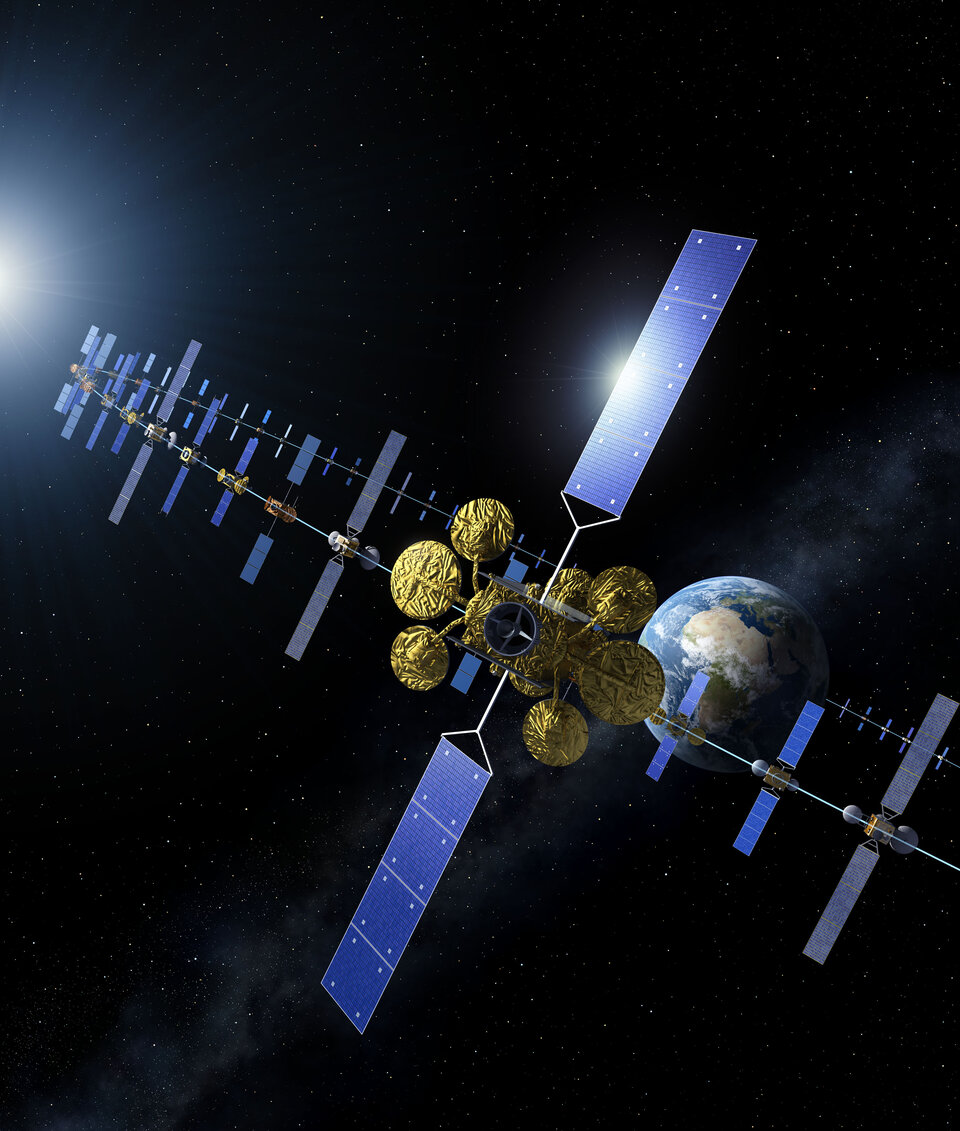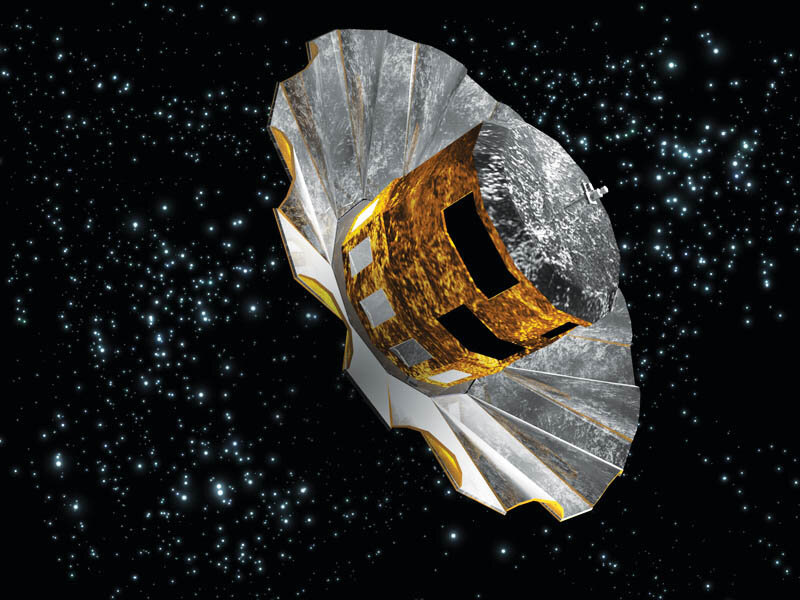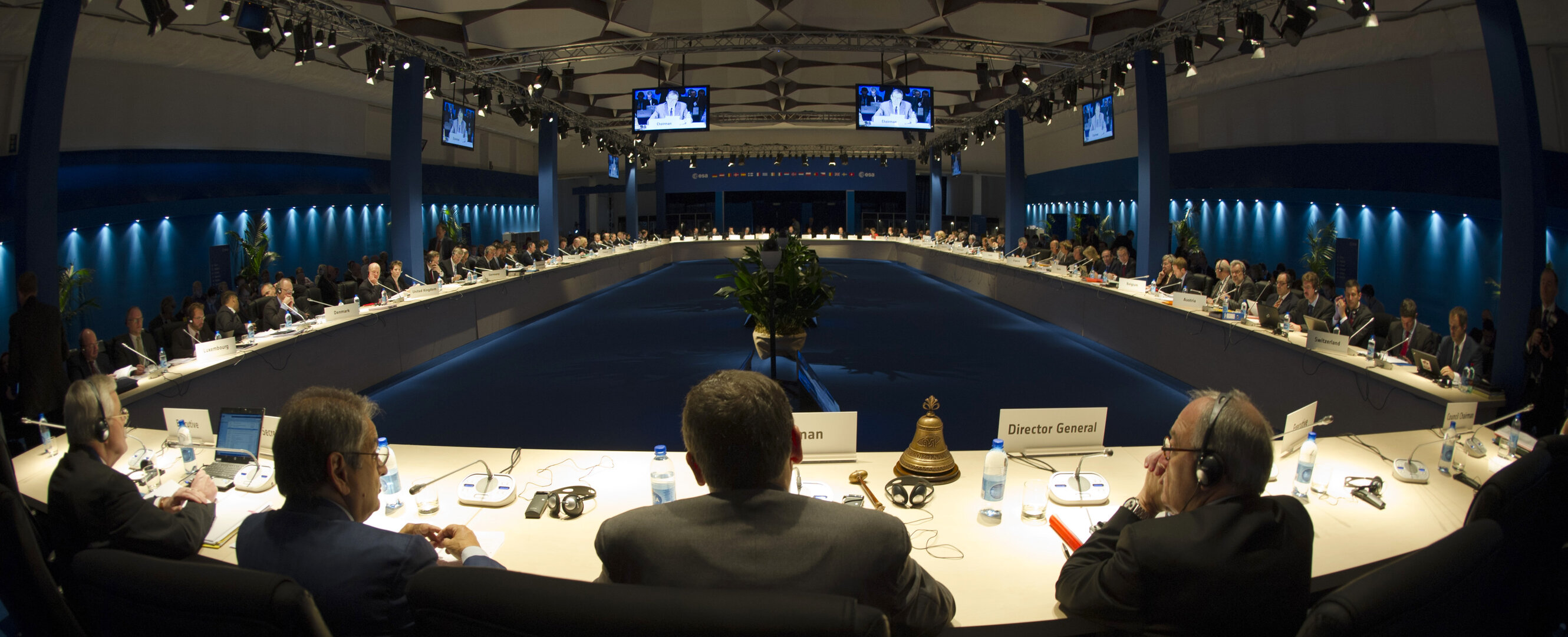Making space for Europe - Pan European Networks March 2013
In November 2012, the European Space Agency (ESA) concluded a successful two-day council meeting at ministerial level in Naples, Italy. At the conference, ministers from ESA’s 20 member states and Canada allocated €10bn to the agency’s space activities and programmes for 2013-2017.
The ministers focused the investments on fields with high growth potential or with a direct and immediate impact on the economy, such as telecommunications and meteorology. They also approved the proposals for the domain of Earth Observation and confirmed Europe’s commitment to the exploitation of the International Space Station (ISS).
Pan European Networks asked ESA’s director general, Professor Jean-Jacques Dordain, about some of the commitments made during the meeting and how they will help Europe to maintain its position at the forefront of space exploration.
Europe’s commitment to the exploitation of the ISS was confirmed during the ministerial council. What will this mean for the future role that ESA will play, and do you feel that this commitment is deserving of the large percentage of the €10bn of funding allocated for ESA’s space activities and programmes for 2013-2017?
The continuation of the International Space Station exploitation programme is the common goal of all ISS partners (the USA, Russia, Canada, Japan and, of course, Europe). Each partner hasrecently adopted measures in order to be able to contribute its share for reaching this common goal. For the continuation of the ISS exploitation programme in 2013-2014, the ministers allocated roughly €1.1bn. In 2014, a further commitment will have to be taken to cover, at a constant yearly level, the following period.
This level of investment is fully proportionate within the overall funding allocated for all ESA programmes. Human spaceflight and operations activities are allocated roughly 10% of ESA’s yearly budget. Against this, the Earth Observation programme accounts for over 20% of the yearly budget, followed by Navigation (17%), the majority of which is procurement on behalf of the European Union , Launchers Development (14%), and the Space Science programme which receives a 12% annual share, while competitiveness in Telecommunications and Integrated Applications reaches 8.2%.
The €10bn investments stemming from the council meeting at ministerial level were carefully balanced among three complementary strategic objectives: pushing the frontiers of knowledge; supporting an innovative and competitive Europe; and enabling space-based services.

The first objective (pushing the frontiers of knowledge) is achieved through a combination of mandatory activities within ESA’s scientific programme (solar system and Universe) and optional activities that take into account Earth sciences for the increased understanding of our planet, as well as the science that comes from the exploitation of the International Space Station and the space exploration programme to allow Europe to take part in humankind’s future ambitious adventures of discovery and innovation.
The second objective (supporting an innovative and competitive Europe) concerns telecommunications, launchers, technology research and technology transfer. The strong investments in telecommunications are complemented through partnerships mostly with private partners (industry and operators). The launchers’ domain sees the continuation of the development of an adapted version of Ariane 5 Mid-life Evolution, with its re-ignitable upper engine Vinci, and the detailed definition studies for the new Ariane 6 in order to achieve engaging industrial offers in 2014 in view of a maiden flight in 2021. The investments in the field of technology programmes, which are interlinked with all other programmes, will support Europe’s edge in world markets.
The funding related to the third objective (enabling services) is at least doubled through partnerships with Eumetsat and the European Union. These investments aim at maximising benefits deriving from satellites to society and the economy, in particular through programmes such as Meteosat Second Generation in the field of meteorology, IRIS for safe communications in air traffic management, and SAT-AIS, which deals with vessel identification for maritime surveillance. The European GNSS Evolution Programme (EGEP) in the domain of navigation – where the second-generation of Galileo will be prepared – and the third slice of the space component of the EU’s GMES/Copernicus programme in the field of Earth observation for environment and security are also contemplated in the third objective.
In the field of the ISS activities, the continuation of the European Programme for Life and Physical sciences (ELIPS period 4, 2013-2016) was also funded. One of its key objectives is that of capitalising on the European investments already made into the International Space Station through the execution of a broad utilisation programme mainly carried on inside ESA’s Columbus laboratory.
Since its inception in 2001, the European Programme for Life and Physical Sciences has already produced many advances in a variety of scientific disciplines, advances that have, and will have, a positive impact on European citizens and processes on Earth as well as on future spaceflight activities. ELIPS has provided an ideal platform for Europe to become not only the main scientific user of the ISS but also to expand its international competitiveness in health research, innovative materials and processes and to achieve important scientific results in plasma physics, exobiology or bone and muscle research to name but a few.

Telecommunications seems to be a big future focus for ESA (particularly with regard to the UK, which has increased its investment in ESA by 25% to this end). Do you feel that there is an increasing emphasis on market share and return on investment, rather than in science? If so, how can you ensure that ESA continues the world-class science it is famous for (the fact that it is mandatory for ESA member countries to fund science notwithstanding)?
Satellite communications are the mainstay of the European space industry. The market has witnessed a large evolution in the past decade, leading to more than 300 satellites currently in geostationary orbit. In 2010, the sales of €1.8bn in satellite communication systems represented more than 60% of the total activity of the European satellite industry and more than 80% of the export sales of this industry.
More than 40% of the 35,000 highly skilled jobs in the European satellite industry are dedicated to satellite communication manufacturing and integrating satellites, delivering the terrestrial infrastructure or designing and producing user terminals. In the coming decade, the world market will be increasingly competitive and innovation will be the key to improve Europe’s competitiveness. Thanks to the various public-private partnerships that have been set up in recent years, ESA’s telecommunications programme ARTES (Advanced Research in Telecommunications Systems) has gained an enormous economic leverage that goes far beyond the programme itself. Competitiveness in this market keeps down the price of scientific missions by spreading overhead costs.
The NeoSAT (ARTES 14) programme, for instance, is a ‘new entry’ that has taken off at the Naples ministerial meeting, aimed at developing, qualifying and validating competitive next-generation satellite platforms for satellites in geostationary orbit in the three to six tonne range. The programme strives to provide European industry with the technologies to capture at least 50% of the satellite communication market in the 2018-2030 period, which is expected to generate €25bn of satellite sales.
ESA has already implemented several successful partnerships with European operators. The objective of the PARTNER programme (ARTES 33) is to provide an efficient programmatic framework to support the implementation of new partnerships which are enabled by European technology breakthroughs or innovation at system-level in which ESA can help mitigate the technological risk. Satellites powered by innovative fully electric propulsion systems are at the heart of the new partnership which is being set up as the first PARTNER project with the largest satellite operator in the world (SES in Luxembourg).
However, the increased involvement in telecommunications is not brought forward to the detriment of the science programme. ESA’s mandatory Scientific Programme has, since the beginning, been the agency’s backbone. As mentioned earlier, it benefits from roughly 12% of the yearly budget (versus the 8.2% devoted to Telecommunications and Integrated Applications).
Its success is demonstrated by the large number of spacecraft in operation, many beyond their design life, each of which has resulted in Europe becoming a leader in the respective field. Since the previous ESA council at ministerial level of 2008 in The Hague, a number of new missions were selected and satellite developments began.

Two new ‘medium’ missions have now been selected: Solar Orbiter due for launch in 2017 for a close-up high resolution study of the Sun, and Euclid, scheduled for a 2019 launch, which will explore the hidden side of our Universe: dark energy and dark matter. In addition, a new ‘large’ mission – JUICE, which will tour Jupiter’s icy moons, is to be launched in 2022.
Three other missions are due for launch in the next three years: Gaia in 2013, which will study our galaxy in depth; the LISA Pathfinder in 2014, which will test the concept of gravitational waves detection; and BepiColombo in 2015, bound for Mercury, the least studied planet in the inner solar system. Moreover, the CHEOPS mission, to study exoplanets – planets around other stars – has already been selected for a launch expected in 2017, and new missions are also being studied.
One remarkable defining characteristic for the science programme is that all new ideas coming into the programme come from the scientific community itself, and the selection of the best missions among the is performed though a peer-review process that is again driven by the scientific community.
A political declaration towards the European Space Agency that best serves Europe was approved by the ESA member states. Can you tell me more about this, and what it will mean for the future of European space science?
In order to successfully manage Europe’s space activities for the benefit of its member states, ESA has had to continuously adapt to a changing environment ever since its inception. A further major step in this evolution occurred with the start of the Galileo development programme in 2000, in co-operation with the EU, followed by the GMES/Copernicus programme for global monitoring for environment and security. In gradual steps, through the will of their respective member states, ESA and the EU have increased their co-operation. In 2007 a Joint European Space Policy was welcomed by all EU and ESA member states. The EU is now committed to creating and maintaining the fully operational Galileo system and is close to agreement on how to fund the operational Copernicus programme.
These major commitments have greatly strengthened the bonds between ESA and the EU. Moreover, the Lisbon Treaty, which entered into force on 1 December 2009, made explicit the EU competence in space though its Article 189, and is modifying the political and institutional setting for co- operation since the EU is putting in place, step by step, the instruments they need to implement their competence in space.
This is good news for Europe. These changes should lead to having space further used as a tool for the EU policies and to reinforcing the visibility of space at political level. However, the ESA council at ministerial level has concluded that, in order for the European space sector to take full benefit from these institutional evolutions, and to ensure that this sector can evolve towards a further increase of efficiency and competitiveness, it is time to reflect on how ESA itself can evolve in order to best serve Europe, its policies and its citizens, building on its heritage and taking stock of this new EU dimension, in order to prepare for any necessary decisions to be taken by member states on the further evolution of ESA at their next rendezvous at ministerial level in 2014.
While the impetus in the EU comes mainly from the desire to develop space applications, the EU is also investing, to a lesser extent, in space science and technology. Closer co-ordination between ESA and the EU can only benefit the science sector by ensuring that the respective programmes are fully complementary.
When European Commissioner for Industry, Antonio Tajani, wrote for PEN: Science & Technology (June 2012, issue 3 – pp 41-43) he said that, in order to maintain world-class European space research, three elements are essential: “Dedicated investment in space technology research on the basis of scientific questions; excellent management of industrial procurement of space missions […]; and organised support to the scientists with a focus on excellent scientific use of space data.” What are your thoughts on this, and how will ESA, through the commitment and decisions made at the ministerial council, strive to achieve these ends?
Vice-President Tajani summarised the situation very well. As I have explained earlier, the ESA programme is determined as a result of keen competition between ideas coming from the European scientific community. The demanding requirements that the scientists identify for each mission are translated into technological requirements by ESA and its industrial contractors. The renewed commitments of the ESA member states to the science programme ensure that we have the resources to continue with such missions. The exploitation of satellite data has always been a role fulfilled by the member states through their national programmes. The EU is examining whether its own R&D programmes – the Seventh Framework Programme currently and from 2014 the Horizon 2020 programme – can supplement these efforts and further increase the scientific output from ESA’s investments. I welcome this.
Given the close relationship between the European Commission and ESA, what are your hopes for the space section under Horizon 2020, and do you feel that enough is being done at this level to support space science and research as its importance becomes increasingly evident?
The most important aspect of space in the EU’s Horizon 2020 programme is to ensure that the relevant EU and ESA work programmes are complementary, not only in space science but in technology, Earth science, ISS exploitation and applications development. It is also essential to ensure that the management of the programmes is co-ordinated effectively and that the different tools available to ESA and the EU are used appropriately, taking account of some of the unique features of the space sector.
ESA is in detailed discussions with the European Commission on all of these different programme areas to make certain that, between us, we maximise the scientific and innovation benefits for the member states and for the industrial and scientific communities. This is a challenge, as the two systems have some significant differences. However, we have already shown with Galileo and Copernicus that there is greater flexibility than may at first appear to be the case, in both the ESA and the EU financial regulations.


